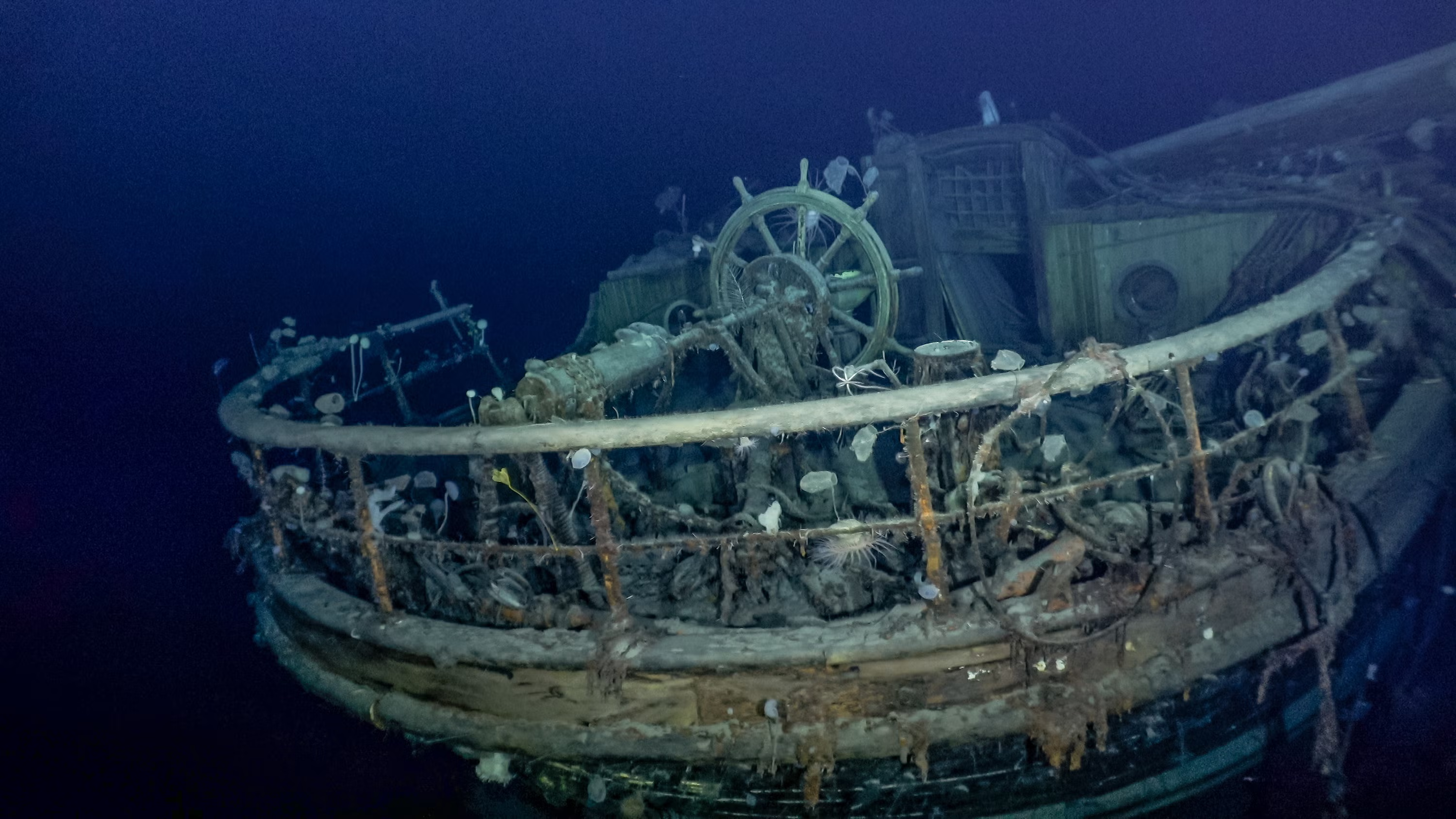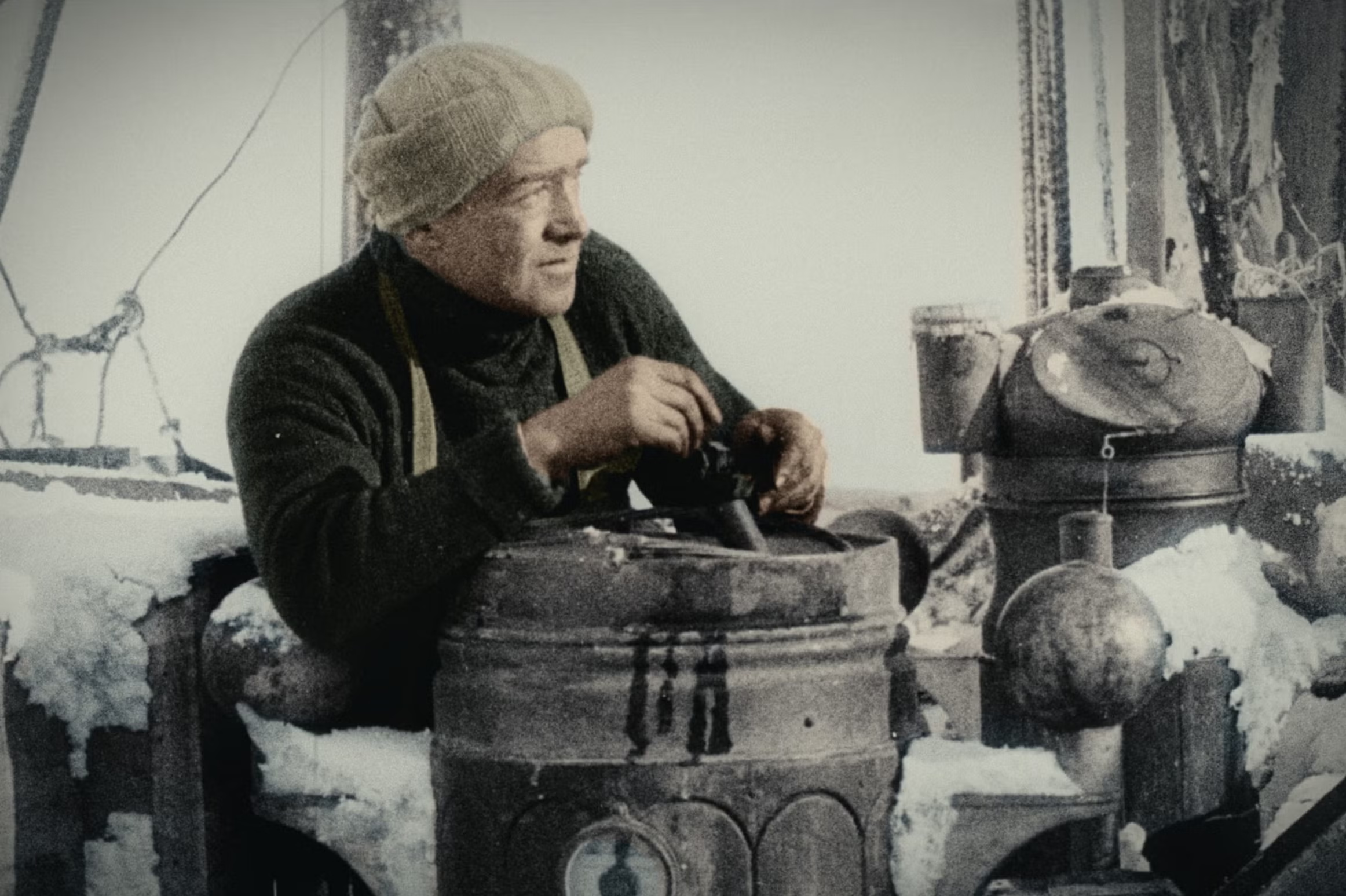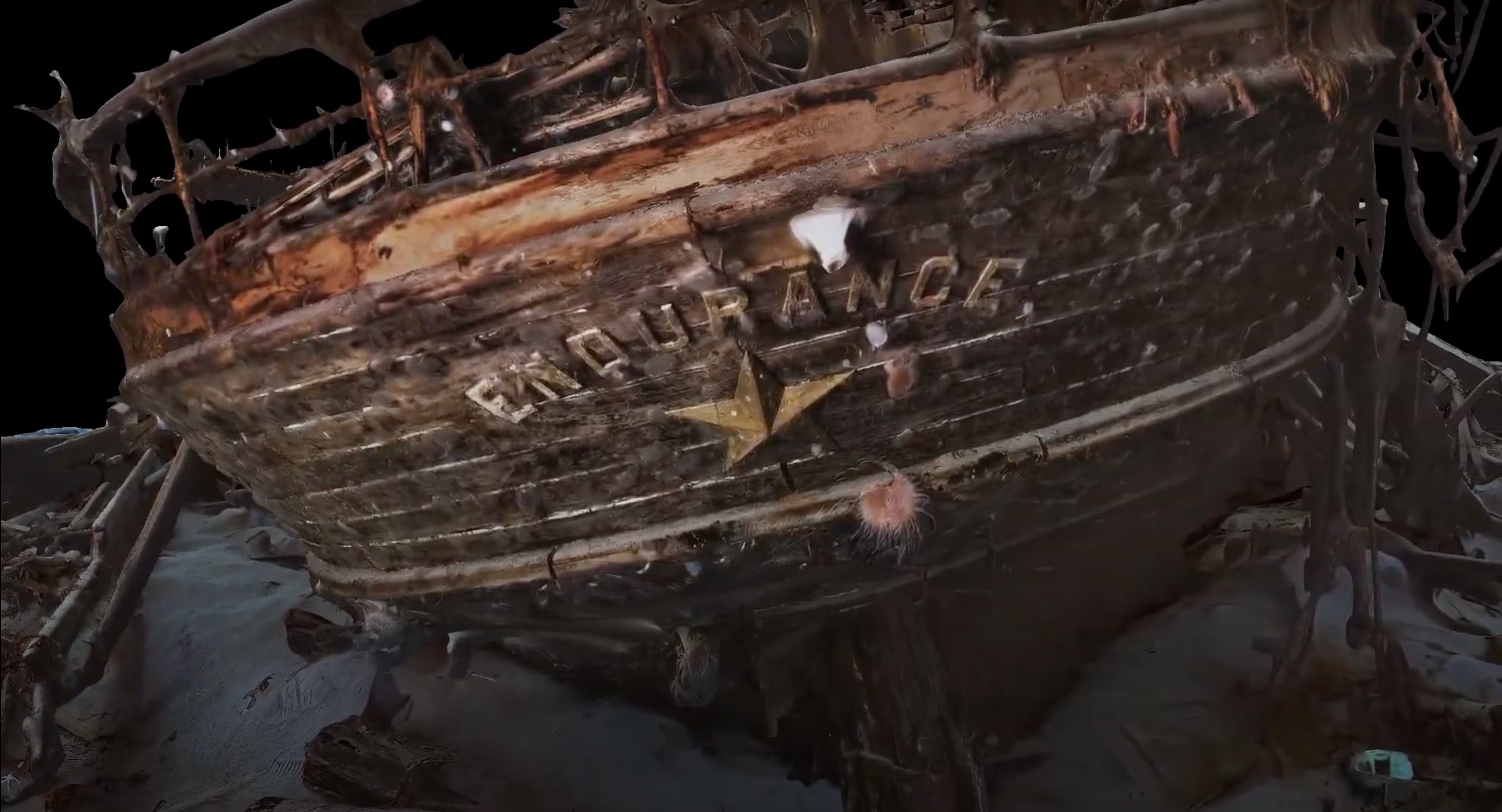Your support helps us to tell the story
Support NowThis election is still a dead heat, according to most polls. In a fight with such wafer-thin margins, we need reporters on the ground talking to the people Trump and Harris are courting. Your support allows us to keep sending journalists to the story.
The Independent is trusted by 27 million Americans from across the entire political spectrum every month. Unlike many other quality news outlets, we choose not to lock you out of our reporting and analysis with paywalls. But quality journalism must still be paid for.
Help us keep bring these critical stories to light. Your support makes all the difference.
Sir Ernest Shackleton’s lost ship Endurance has been seen in spectacular 3D detail in new images released more than a century after it sunk.
The vessel was hidden at a depth of 3,000m at the bottom of the icy Weddell Sea in Antarctica after sinking in 1915 – before it was discovered two years ago, beautifully preserved by the ice.
The newly revealed digital scan – which was taken when the ship was found but has just been released in the new documentary Endurance – shows the ship as if the murky water has been drained away for the first time.
The scan, which was produced from 25,000 high resolution pictures, was scoured by the documentary team to reveal the stories of the vessel.
In one, the plates used by crew are seen scattered across the deck, while another shows a boot that could have belonged to Shackleton’s second-in-command Frank Wild.

A particular highlight is a flare gun, discussed in the crew’s journals, which the expedition’s photographer Frank Hurley fired when their ship was lost to the ice.
Dr John Shears, who led the expedition that discovered Endurance, explained to the BBC: “Hurley gets this flare gun, and he fires the flare gun into the air with a massive detonator as a tribute to the ship.
"And then in the diary, he talks about putting it down on the deck. And there we are. We come back over 100 years later, and there's that flare gun, incredible.”
The Imperial Trans-Antarctic Expedition, led by Anglo-Irish explorer Shackleton, was set to make the first land crossing of Antarctica – but it was doomed from the get-go.

Just weeks after leaving South Georgia, Endurance got stuck in a pack of ice, drifting for months before the order was finally given to abandon ship.
Endurance sank in 21 November 1915, while the crew had to travel hundreds of miles over ice, land and sea before making it to safety.
Miraculously, all 27 crew members survived, with their incredible story documented in their diaries and Mr Hurley’s photographs, to which colour has been added for the documentary.

When the ship was found in 2022, the news made headlines across the globe.
The newly revealed 3D scan was created out of thousands of photographs taken by underwater robots mapping the wreck from every angle, before these were “stitched” together to produce a digital twin.
It provides a complete view from bow to stern of the 44m long wooden wreck, in contrast to footage that could only capture parts in gloom.
The model – which belongs to the Falklands Maritime Heritage Trust, the funder and organiser of the expedition – shows the structure is mostly intact, even though the masts and deck were left in tatters after being crushed by the ice.
Shackleton’s descendants believe Endurance will never be raised – and even visiting the wreck is thought to be a huge challenge considering its remote location.

However, Nico Vincent, from Deep Ocean Search – which, along with Voyis Imaging and McGill University, developed the technology for the scans – said a new way to study the vessel has been offered by the digital replica.
“It's absolutely fabulous. The wreck is almost intact like she sank yesterday,” said Mr Vincent, also co-leader for the expedition.
He explained that scientists could use the scan to study sea life colonising the wreck and sea floor geology as well as to discover new artefacts. “So this is really a great opportunity that we can offer for the future,” he said.
The Endurance documentary premieres at the London Film Festival on 12 October and is set to be released in UK cinemas on 14 October.
Disclaimer: The copyright of this article belongs to the original author. Reposting this article is solely for the purpose of information dissemination and does not constitute any investment advice. If there is any infringement, please contact us immediately. We will make corrections or deletions as necessary. Thank you.



